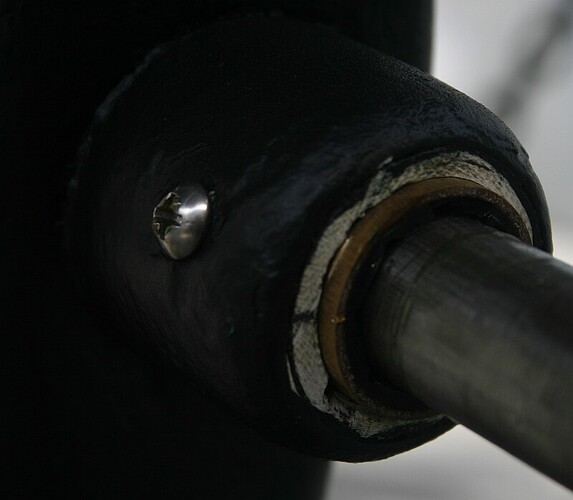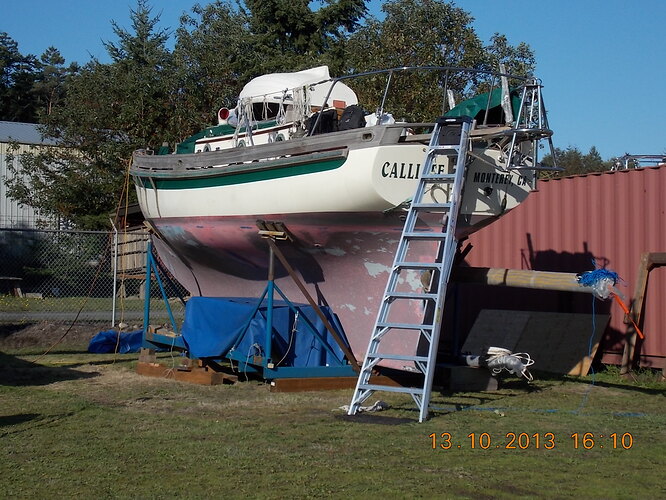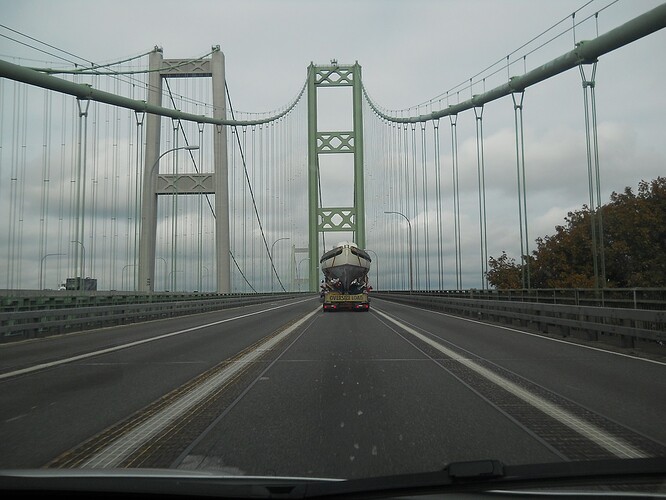Dan:
The white material is the end of the shaft log/shaft tube. I lightly touched a grinder to the area so I could clearly see what was the naval brass sleeve and the rubber of the shaft bearing (aka cutless bearing aka stave bearing) and what was the shaft tube, mishmash or whatever.
Stewart:
I drilled into the brass sleeve of the shaft bearing. And then tapped it. So my 1/4" x 1/2" metal thread penetrates and is threaded into two or three of: (1) the fibreglass of the protuberance of the hull; (2) the fibreglass of the shaft tube; and (3) the naval brass of the sleeve of the shaft bearing.
I’m not concerned that the screws will loosen with vibration. Screws into fibreglass very rarely loosen. Fibreglass has a surprisingly tough grip on metal threads, partly (I suspect) from the friction of GRP and partly from any reaction to the compression exerted by a thread screwing into GRP. That’s why, for example, the sea strainer covering your engine raw water intake is just held by a half dozen screws. And it doesn’t loosen. You may have a few cables and fuel lines in your engine room that are held in place by screws into the GRP. In general practice, they don’t loosen.
If you look closely at my pic, you’ll see that I was a tad over-eager with my saw blade - I accidentally cut into the GRP of the shaft tube (look at the circle of the white shaft tube and you should see my over-cut).
My 1/8" allen key rounded the hex socket of one of the set screws. With nothing else on which to grip, I had to drill it out. Quite inelegant of me.
In frustration, I went to the chandlery and bought those two pan-head metal threads, figuring that next time, even if the philips head fails, I might be able to put grips on the metal head.
I’ve seen various makeshift tools for shaft bearings. None of them elegant. And none 100% successful. Sawing the sleeve is quite common. From my pic you might note that I left the bearing sitting proud, with the idea that I might be able to force grips onto that lip and withdraw it.
I don’t know what boat yards use to extract the new generation of shaft bearings (the ones with phenolic resin sleeves that supposedly swell in water and then grip the inside of the shaft tube). Probably a hacksaw blade!
Seacap’s tale of his slipped shaft bearing is on his own weblog and also at: http://www.samlmorse.com/forum/read.php?5,9546,page=1
Bil





